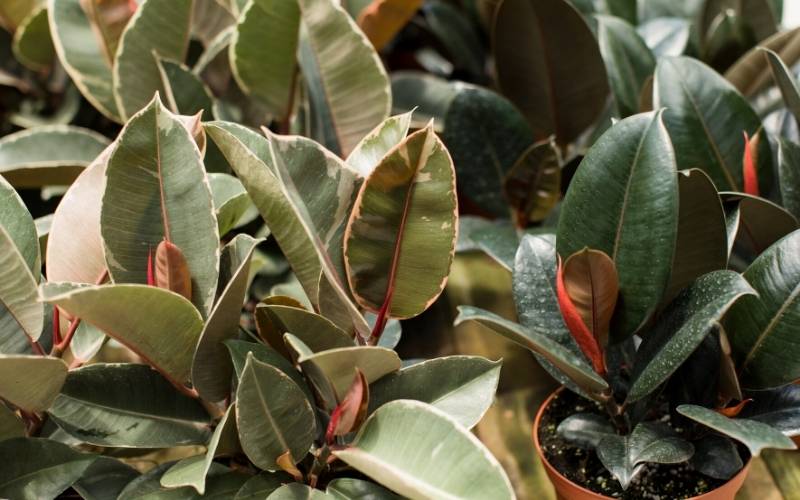
Ficus elastica, commonly referred to as a rubber plant or rubber tree, are a very beautiful and underrated tree-like indoor houseplant.
With their shiny, dark green leaves these plants can be enjoyed as a medium sized houseplant, or grown large enough to be the focal point of a room. They can grow impressive amounts in just a few years, especially if brought outside during the summer months.
To make a rubber plant more bushy, pruning is necessary. To prune a rubber plant:
Rubber plants respond very well to pruning, especially if its done around late spring or early summer. They can thrive either as a tall tree, or be maintained as a bushy shrub.
Pruning a rubber plant helps to keep it in good health, while encouraging a desired shape and size.
Rubber Plant Overview
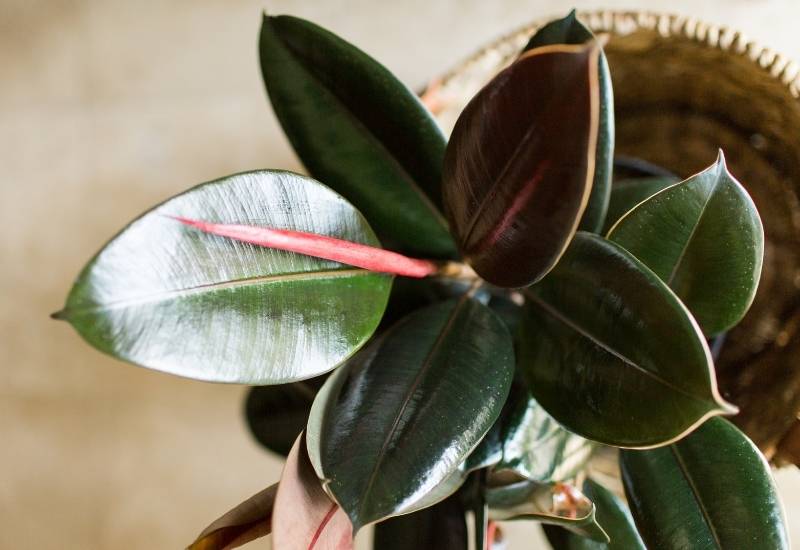
Rubber plants are native to Southeast Asia, where they can grow to be up to 100 feet tall in their natural habitat. As a domesticated houseplant, they are loved for their unique leaves and low maintenance qualities.
The name rubber plant actually comes from their milky white sap, which is sometimes used to make natural rubbers.
You’ll see this sap bleeding from the cuts and plucked leaves during pruning. Be careful, because this sap can cause skin irritation and stain surfaces.
Luckily, rubber plants are highly malleable and easy to shape to your liking. Although the classic rubber plant with its waxy, dark green leaves is the most common, there are a variety of other colours as well.
Keeping your rubber plant in a small pot is one easy way to restrict its growth as a smaller houseplant.
Pruning is also very important for rubber plants, because they tend to grow quite tall and lanky rather quickly. If left unchecked, they may even snap under the weight of their own branches.
They can handle a pretty aggressive pruning in comparison to most other plants. After a major trim it might look a little odd and bare, but don’t worry, it will quickly fill in the space with new leaves.
Before Pruning Your Rubber Plant
Rubber plants can take the form of a tall, slim tree or a more compact, bushy shrub. Maintaining a rubber plant as a bushy shrub takes a little more planning and attention.
When to Prune A Rubber Plant?
Although rubber plants are considered hardy enough to handle some pruning at any time during the year, it is encouraged to wait for the early growing season (late spring or early summer) for a speedy recovery.
If you must prune during the fall or winter, restrict yourself to making only a few minor cuts.
Since these plants can handle a tough prune, the final shape is up to you. With their soft, bendable branches and resilient manner, it is possible to get creative and make something unique.
However if you would like to make more dramatic changes, it’s recommended that you prune in a few stages over the course of a couple months. This will ensure that you avoid shocking the plant.
Pruning A Rubber Plant to Promote Bushiness
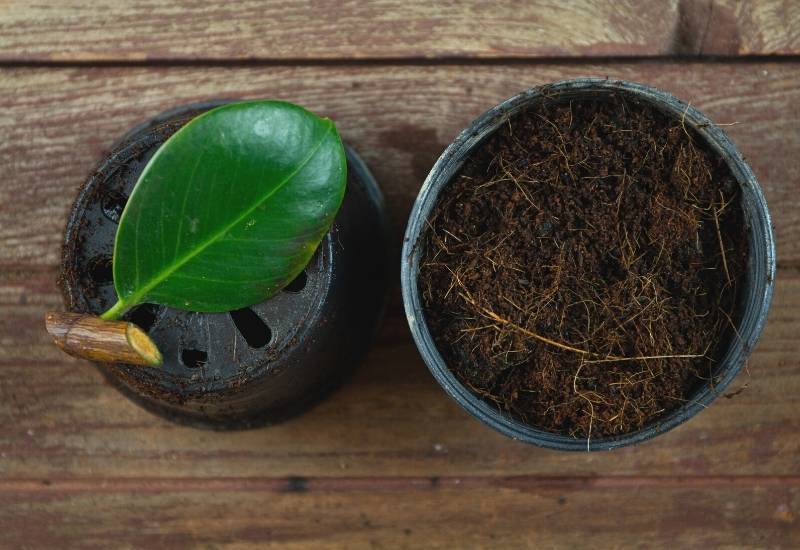
Step 1: Make a plan.
Step back and observe your rubber plant. Decide how you would like it to look considering its location and existing growth.
For example, if your rubber plant is on a table or shelf without very much space to grow, it would probably be best kept as a short, round shrub.
Pruning lateral branches will stimulate new growth to fill in the plants middle section, so choose a size that you can trim down to and then allow it to fill itself in.
Step 2: Remove any branches which seem out of place.
Start by trimming back any of the lower branches which appear to be growing straight out horizontally, or any which are disruptive to your desired shape for the plant.
Some branches will seem to grow in strange directions, curved, or much faster than others. Remove these to keep the plant looking tidy and presentable.
You can also remove some branches and leaves from the middle section of the plant to keep it from appearing too dense, but this is a matter of personal preference.
Step 3: Cut to your desired height.
Once your rubber plant has grown to your desired hight, trim off the top set of leaves before the node. By cutting before the node, instead of after, you are essentially leaving a little stump behind. This will prevent the plant from sending out any more vertical chutes.
For a more compact shrub-like rubber plant, trim the top off when it reaches a maximum of about four feet tall. This will encourage the plant to grow more horizontally and produce a more rounded shape, rather than growing tall and skinny.
Step 4: Encourage leaf coverage by pruning often.
As mentioned above, maintaining a rubber plant as a bushy shrub does require a little more maintenance than its other form as a taller tree-like houseplant. To achieve a bushy rubber plant, it requires constant pruning.
When a cut is made after the node, one and sometimes two new branches will start to develop from the spot where the cut was made. Once the plant has had a chance to recover from the last pruning and sent out some new chutes, cut these ones back too.
Continuously pruning the new lateral growth will give you control over how thick and bushy the plant becomes.
Step 5: Propagate new cuttings back into the pot.
Conveniently, propagating the cuttings of a rubber plant is quite easy. By planting these cuttings back into the pot of your rubber plant, you can achieve a more shrub-like appearance by helping to fill in the lower sections of the plant.
After branches have been cut during pruning, these can immediately be transplanted back into the same pot as the original plant, or rooted first in a glass of water.
Quick Guide to Propagating Rubber Plant Cuttings
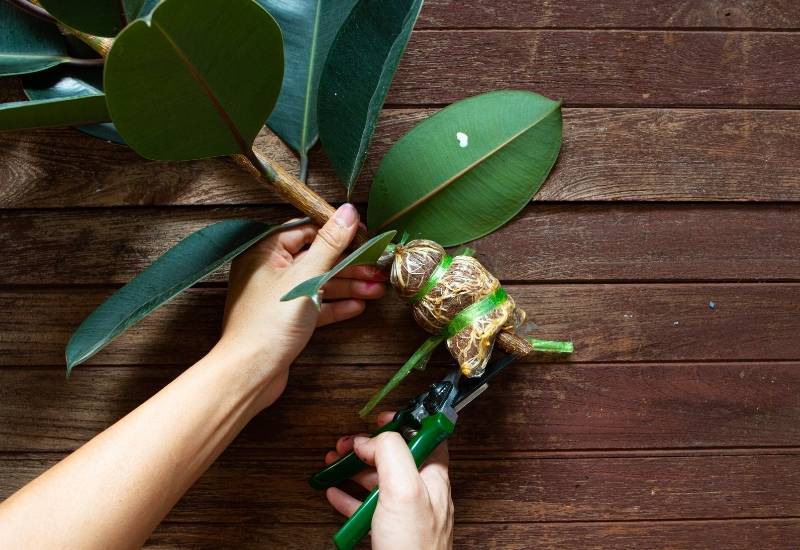
The easiest way to propagate rubber plant cuttings is to take a small branch from a healthy, mature plant and allow it to root in water or soil. The main rule when selecting a cutting, is to make sure it has a node for new growth to grow out of.
Ideally, your cutting will be around six to eight inches in length with more than one node on it. Since rubber plants take quite well to propagation, you can often simply plant a cutting directly back into the pot of the plant it was taken from.
Be sure to keep the soil moist, and you’ll have about a 50/50 chance of success with this method. A helpful trick to increase the likelihood that your cutting will propagate this way, is to dip the cut end in a rooting hormone before planting.
If you prefer higher odds, you can opt to allow your cutting to root in a cup of water first. Rooting in a cup of water and transplanting to soil with a healthy established root system, ensures the success of your cutting in its new home.
Ensure Good Care After Pruning To Promote Rapid Recovery
Pruning can be a very stressful process for plants. When pruning any plant, it is extremely important to make sure that the proper care requirements are met afterwards. This will make it easier for the plant to recover and thrive.
In terms of general care, rubber plants are quite easy to maintain. The key to a healthy and thriving rubber plant is a well balanced amount of sunlight and water.
If your rubber plant isn’t happy, it will start to drop its lower leaves as a signal that one of these two resources is lacking.
Rubber plants prefer to be located in a spot where they will receive bright, indirect light which isn’t too hot.
The ideal location for a rubber plant in front of a south-facing window with a shear curtain. This will allow the plant to receive plenty of light, without the intense heat from direct sun.
Rubber plants will not tolerate sitting in water, so well-draining soil is important. The frequency of watering required for a rubber plant will vary according to the seasons.
In the summer months during the growing season, try to keep the soil moist but not over-saturated. This is especially important after pruning.
Since these plants are not heavy feeders, extra fertilizer won’t be of any benefit. Feeding with a 1/2 strength diluted fertilizer about once per month is all they will need thrive.
Conclusion
Rubber plants are a rewarding, fast-growing, and relatively low-maintenance plant to keep in your home. Their malleable branches and tolerance to manipulation make for a highly adaptable houseplant, which can be a good fit for any decor.
If allowed the freedom and support to grow tall, they will quickly exceed your expectations as an indoor tree-like houseplant. However with their luscious dark green foliage, they are equally as beautiful if kept smaller like a bushy shrub.
Even though keeping a rubber plant as a small shrub requires slightly more planning and maintenance, the satisfaction of customizing a plant to suit your specific desires will make it worth the extra effort.
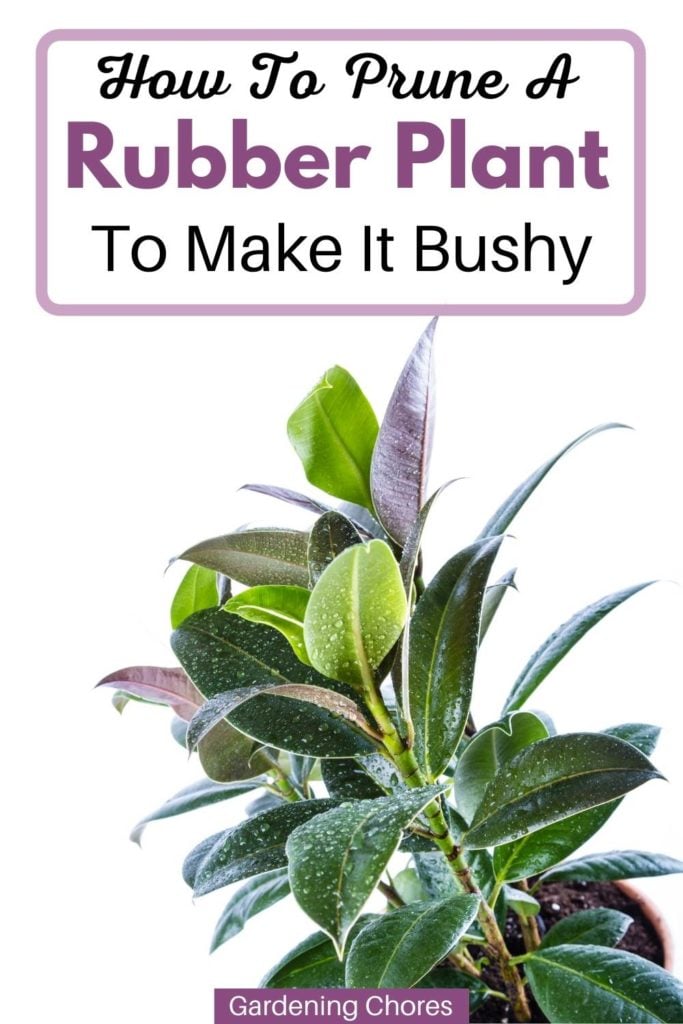

Written By
Amber Noyes
Amber Noyes was born and raised in a suburban California town, San Mateo. She holds a master’s degree in horticulture from the University of California as well as a BS in Biology from the University of San Francisco. With experience working on an organic farm, water conservation research, farmers’ markets, and plant nursery, she understands what makes plants thrive and how we can better understand the connection between microclimate and plant health. When she’s not on the land, Amber loves informing people of new ideas/things related to gardening, especially organic gardening, houseplants, and growing plants in a small space.

This is super helpful—I like the tree form of my ficus melany, but would like it to branch out just a bit more. Thank you!
Best article I have found about rubber plants. I have propogated many plants from cuttings they are all healthy. I just pruned the tallest one, 5ft and put 2 cuttings directly into soil. Hope they take!
Glad you find this helpful 🙂
Hi I am Elaine and I’ve been growing a rubber plant for a while now started with one leaf but it just grown tall not bushy I want it to become bushy it’s just grown tall as me
Due to the natural habit of a Rubber Tree, branching rarely occurs naturally (especially in younger plants), so it is necessary to prune the plant to promote branching through nodes on the stem. By pinching or cutting back new growth, the plant will begin to produce new branches below the cut.
Hello, I just came across your website which is interesting reading. I have 2 dilemmas regarding potted rubber tree plants. Each plant at one time or another has dropped bottom leaves more than normal, I started watering more regular and they stopped, now I notice that each one will drop 1 leaf on occasion…is this normal, they are indoors 70-75 deg with bright indirect light.
Please give me detail instructions on how to propagate these plants, I have not had any luck . I put into soil, enclosed in a ZipLoc which kept it moist and then the leaves fall off. I have also water propagated , roots grown and then kill it when I transplant and if the roots don’t grow then the stem will rot. Help please. Any comments are appreciated.
Condo Living in Los Angeles